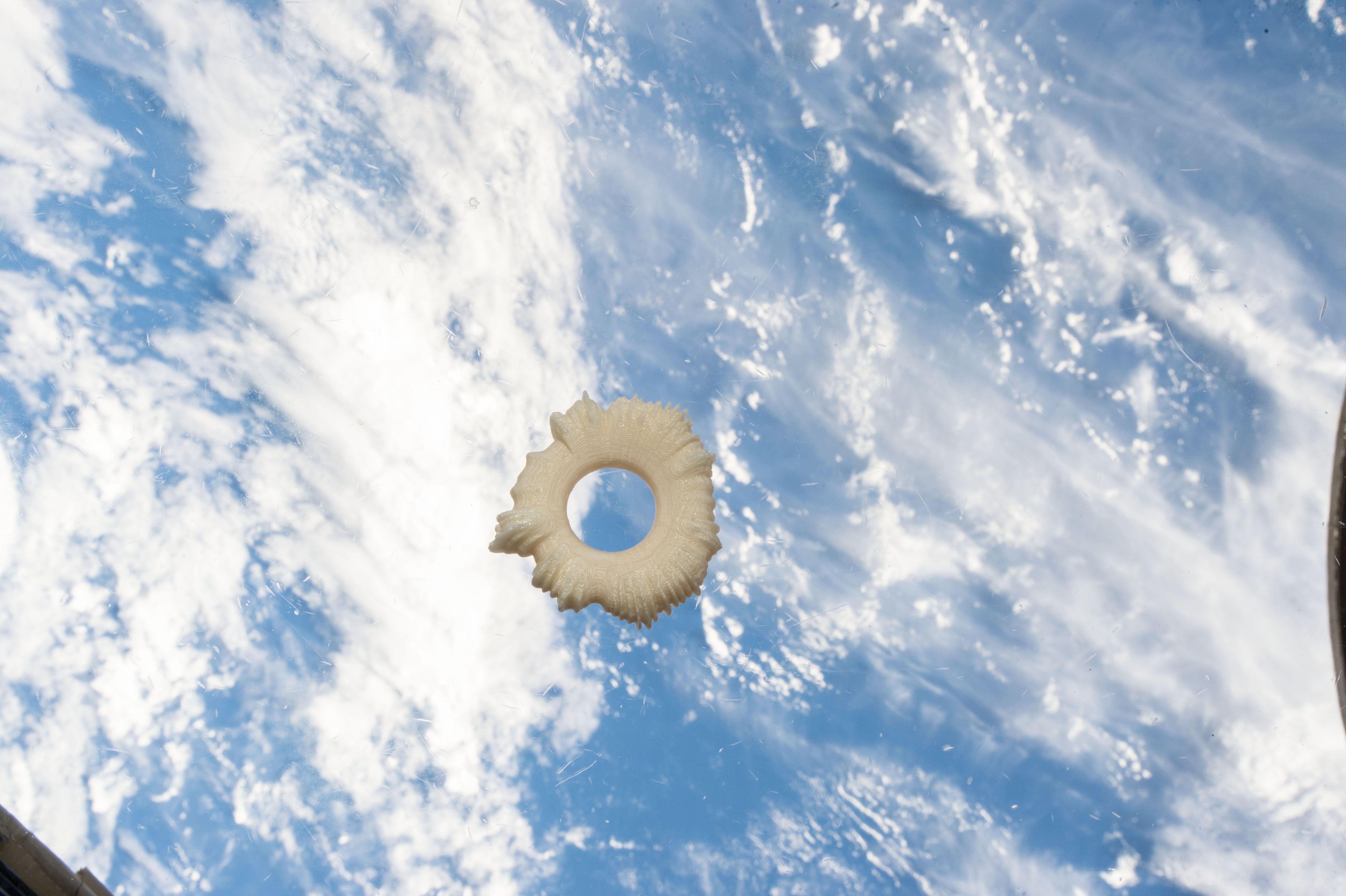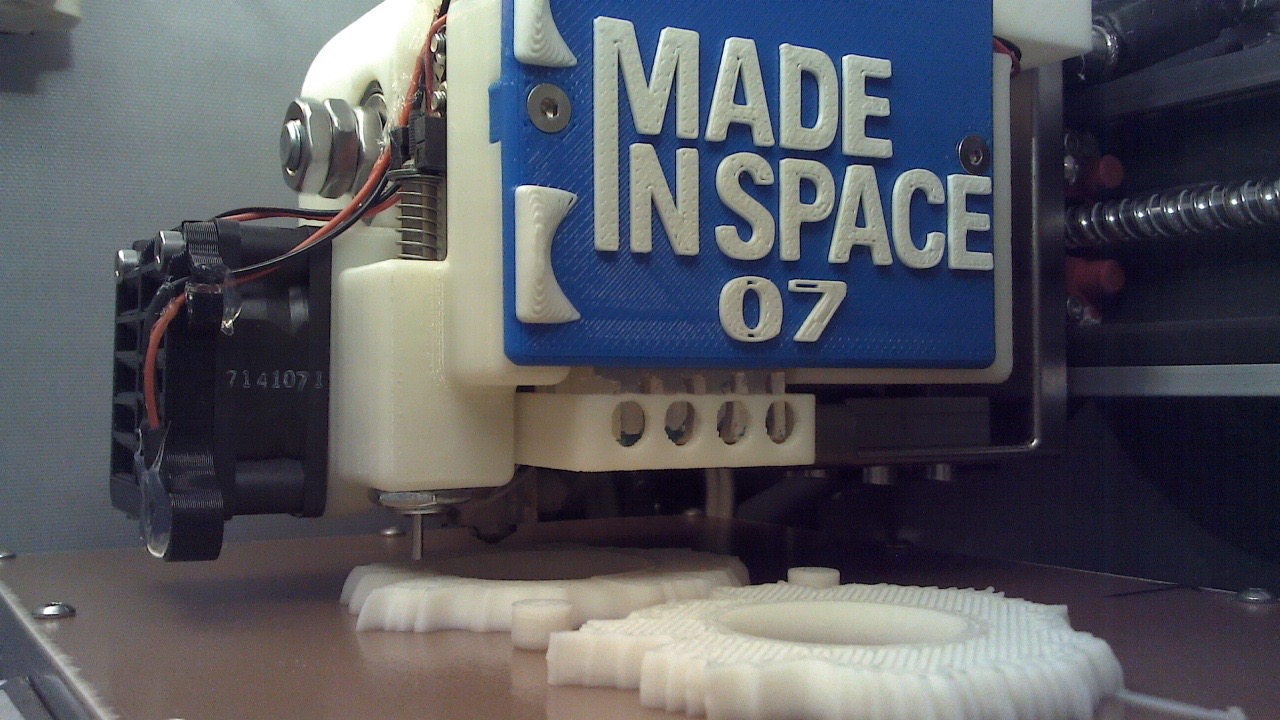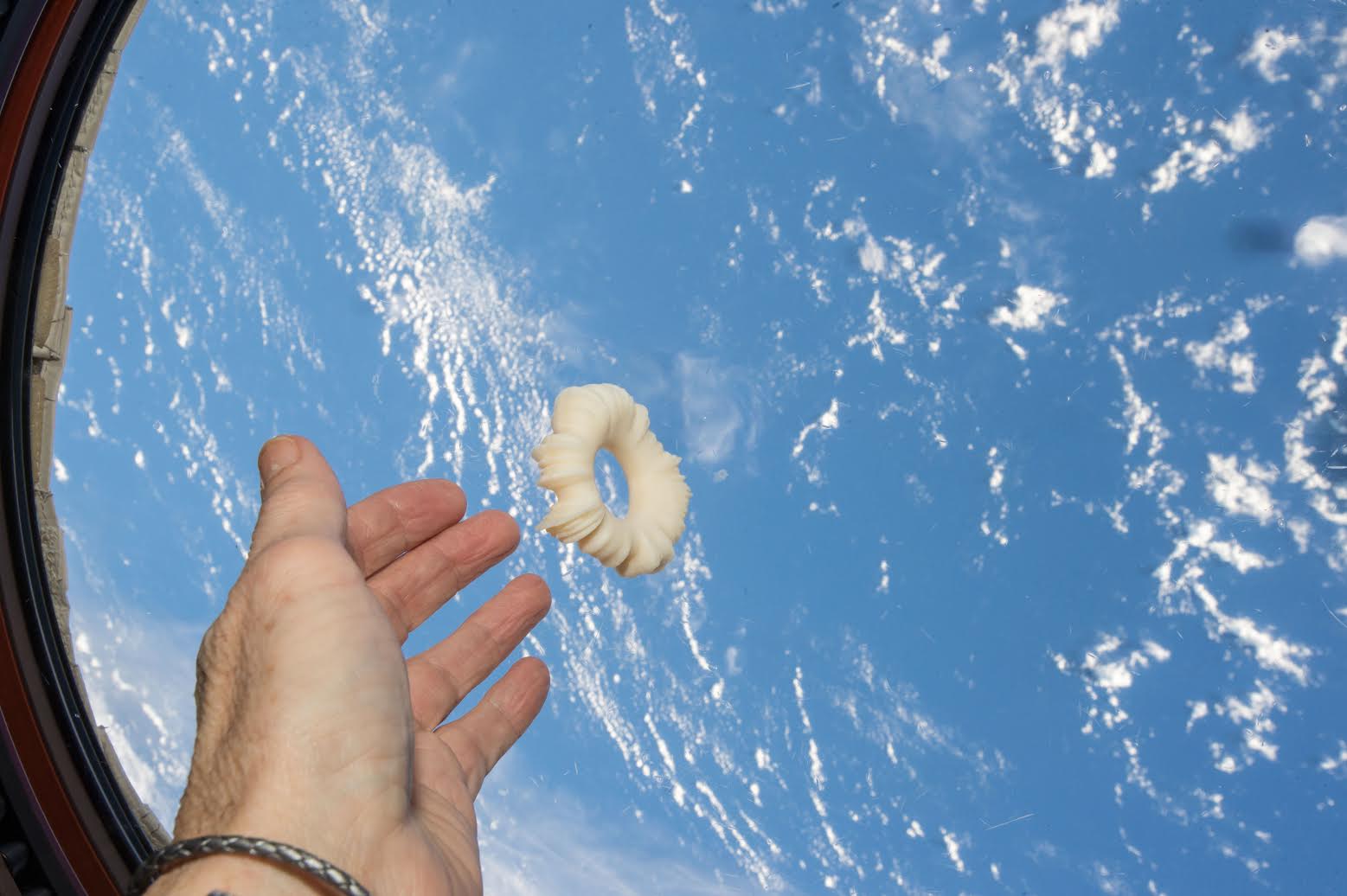3D-Printed 'Laugh' Is 1st Major Artwork to Be Made in Space

Art just made a giant leap into the final frontier.
On Friday (Feb. 10), a 3D printer aboard the International Space Station (ISS) created a sculpture that represents human laughter, as part of a project called #Laugh.
Astronauts have sketched and photographed the vistas from the orbiting lab's windows, and artwork by Andy Warhol, Damien Hirst and others has flown to space in the past. But the new 3D-printed piece is the first sculpture to be produced off Earth, #Laugh representatives said. [3D Printing: 10 Ways It Could Transform Space Travel]
#Laugh is a collaboration between Israeli artist Eyal Gever and the California-based company Made In Space, which owns and operates the Additive Manufacturing Facility (AMF), the ISS' commercially available 3D printer.
The project began Dec. 1, 2016, when Gever and his team launched an app that converts the sound waves of users' laughter into a digital 3D model, or "laugh star." More than 100,000 people generated their own laugh stars throughout December, Made In Space representatives said.
App users then voted on their favorite laugh star. The winner was Naughtia Jane Stanko of Las Vegas, whose model was beamed up to the ISS and printed out Friday.
The sculpture has symbolic significance, Gever said.
Breaking space news, the latest updates on rocket launches, skywatching events and more!
"We live in epic times, where continuous disruption and rapid change exists against a backdrop of extremely volatile cultural shifts constantly challenging our human conscience," Gever said in a statement. "A laugh star floating in space, above all our heads, is my attempt to create a contemporary metaphor for the hanging 'Sword of Damocles,' a reminder that the beauty of human life is so fragile."
The AMF usually prints out spare parts, tools and other gear that astronauts can use aboard the orbiting lab. But Made In Space was happy to expand the machine's range.
"It's important for the world to see that technology and art are not independent of one another," Made In Space President and CEO Andrew Rush said in the same statement. "We've enjoyed being a part of this project, and hope that it communicates to the world that innovation and creativity are the driving forces behind humanity's future in space."
Gever and Made In Space Chief Technology Officer Jason Dunn will showcase the winning "laugh star" on March 13 at the South by Southwest Festival in Austin, Texas. You can learn more about their presentation here: http://schedule.sxsw.com/2017/events/PP96556
The AMF, which arrived at the ISS in April 2016, is Made In Space's second 3D printer to make it to the orbiting lab. The company also built a machine for NASA that launched in September 2014 and began making parts two months later.
Follow Mike Wall on Twitter @michaeldwall and Google+. Follow us @Spacedotcom, Facebook or Google+. Originally published on Space.com.

Michael Wall is a Senior Space Writer with Space.com and joined the team in 2010. He primarily covers exoplanets, spaceflight and military space, but has been known to dabble in the space art beat. His book about the search for alien life, "Out There," was published on Nov. 13, 2018. Before becoming a science writer, Michael worked as a herpetologist and wildlife biologist. He has a Ph.D. in evolutionary biology from the University of Sydney, Australia, a bachelor's degree from the University of Arizona, and a graduate certificate in science writing from the University of California, Santa Cruz. To find out what his latest project is, you can follow Michael on Twitter.


